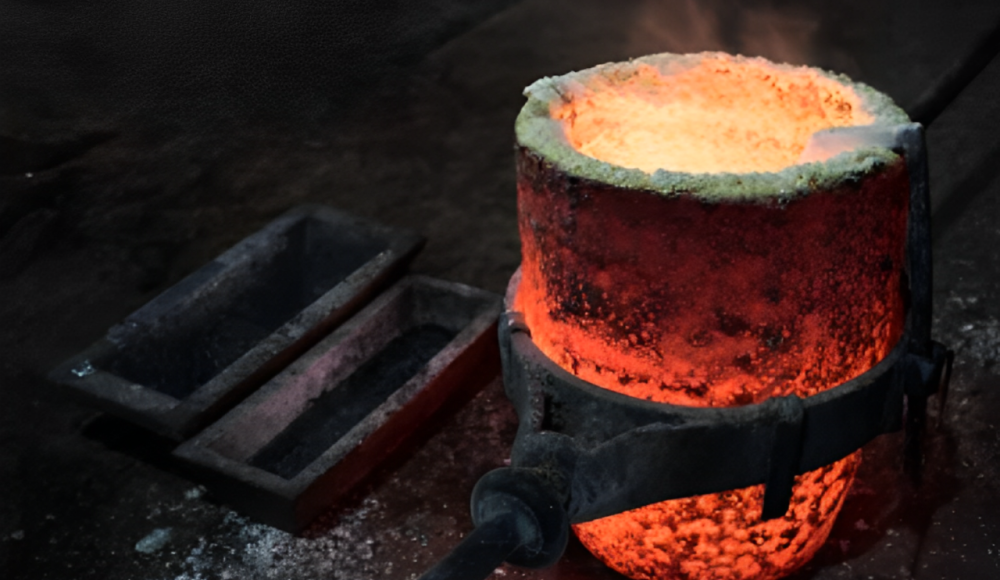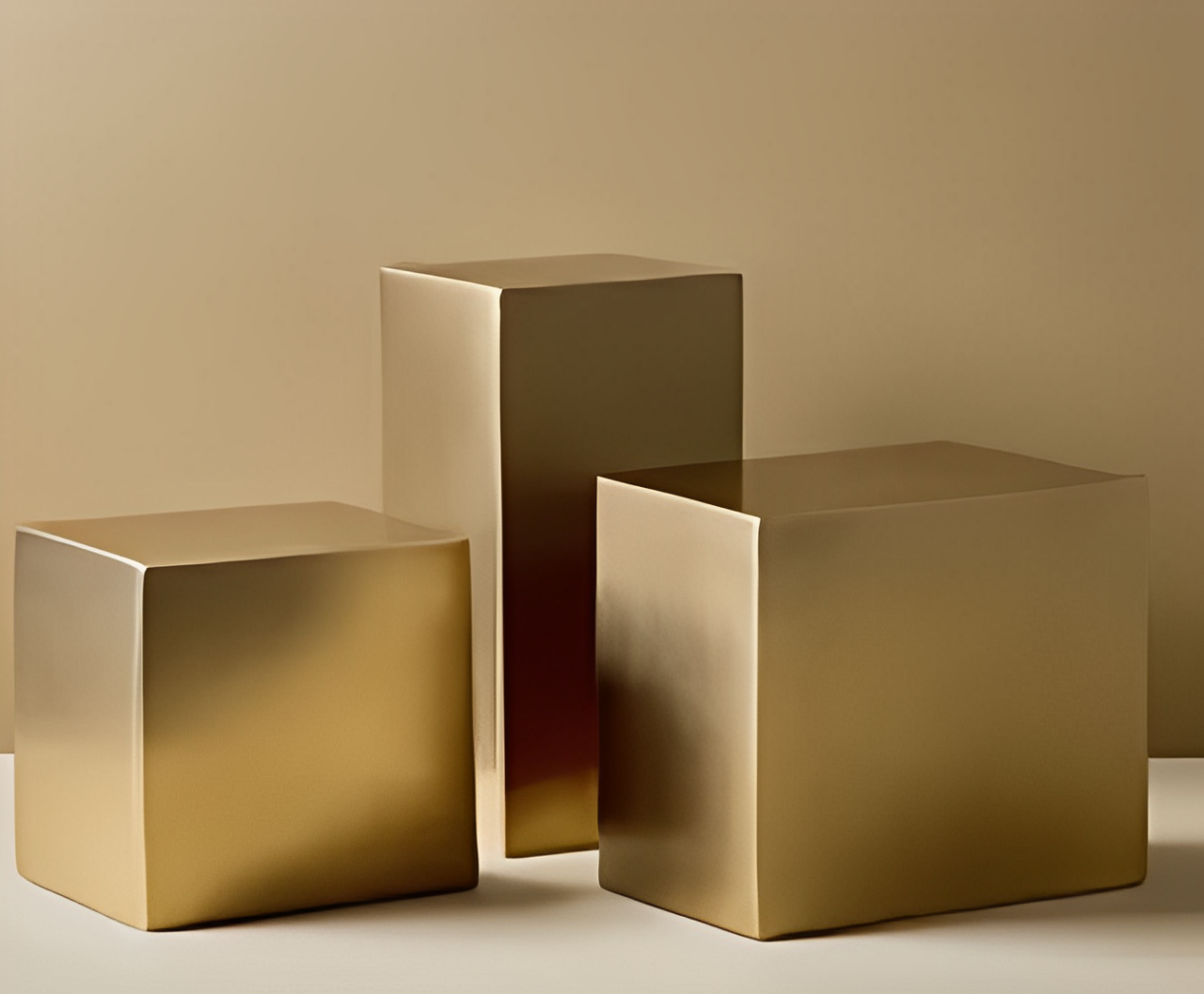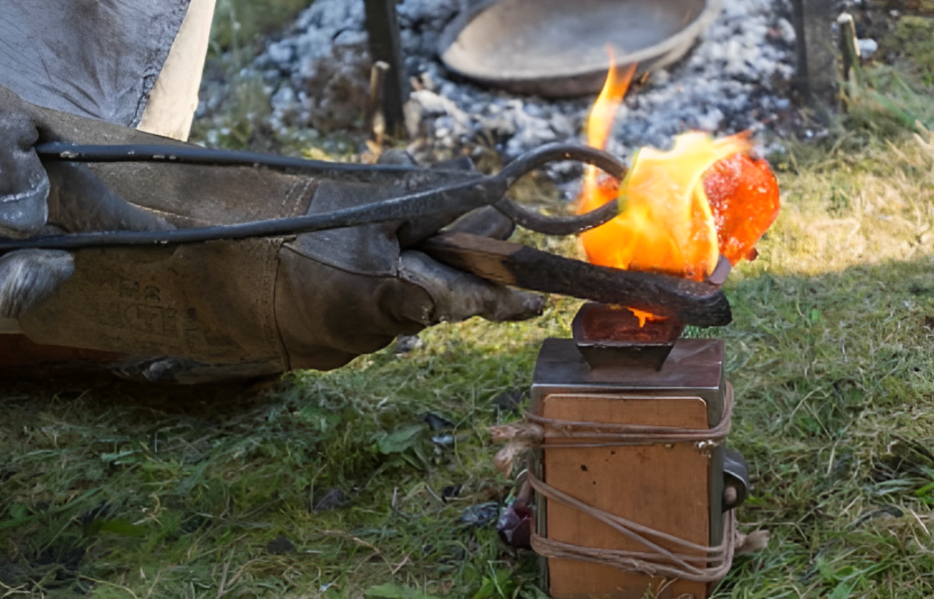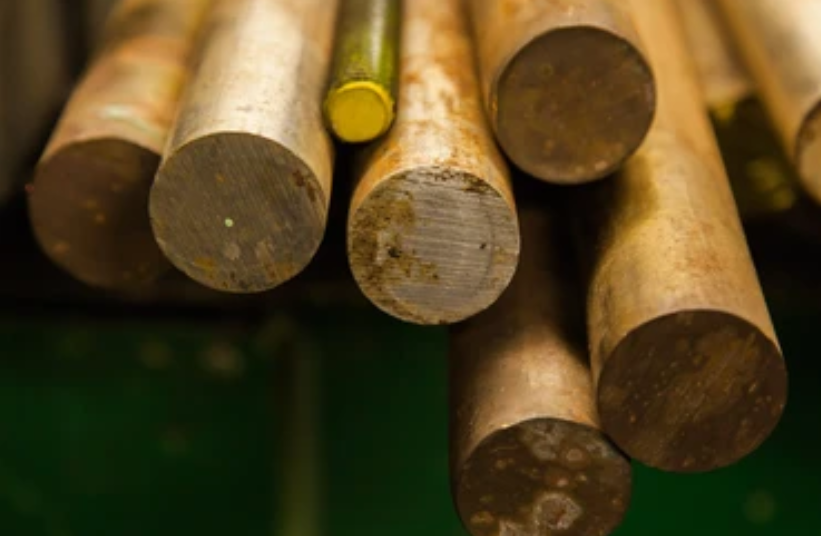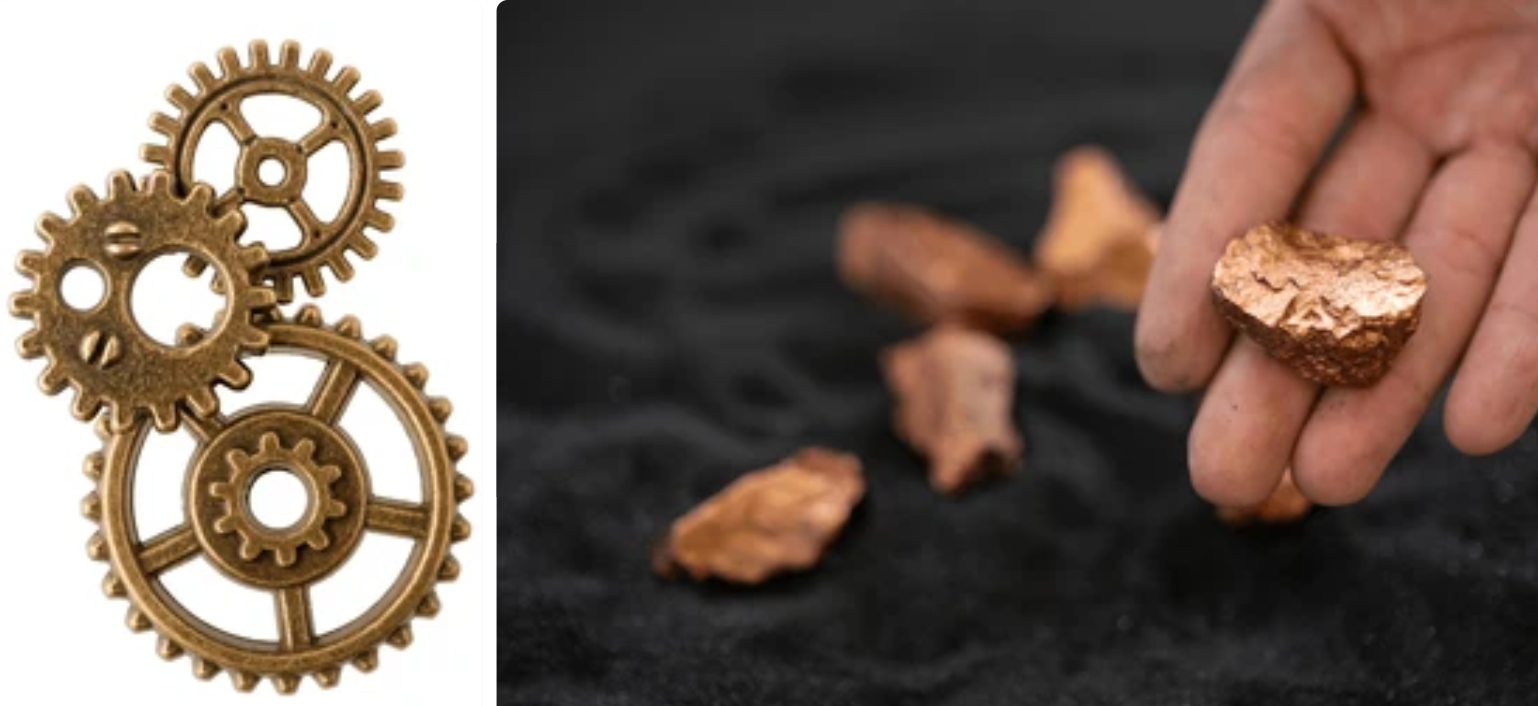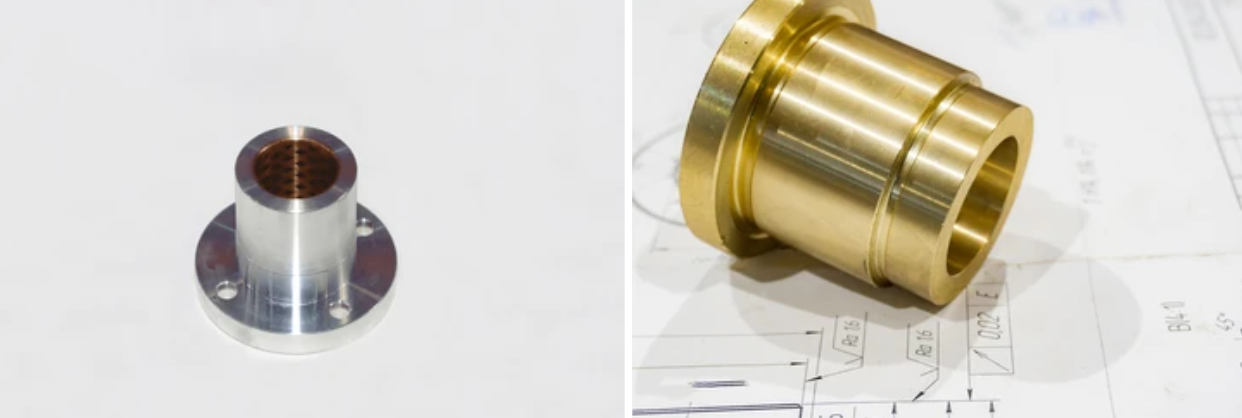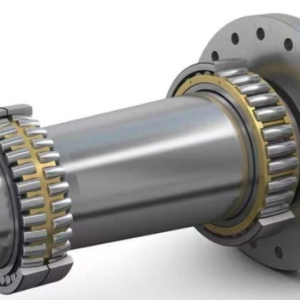لن يكتمل تاريخ الإنسان دون ذكر بعض البرونز وهو معدن يتكون في الغالب من النحاس المخلوط مع القصدير والذي يستمد اسمه من هذا العصر - عصر البرونز. نقطة الانصهار هي خاصية أساسية تحدد استخدامها في الفنون والمنحوتات, الصناعات, وتصنيع الآلات والهيكل. خاصة, توفر هذه المقالة تفاصيل نقطة انصهار البرونز, عوامل مختلفة تؤثر عليه, تقييمها, وتطبيقه.
تكوين البرونز
البرونز ليس مجرد نوع واحد من المعادن, إنه مصطلح عام لسلسلة من سبائك. يشمل التكوين الأكثر شيوعًا:
- نحاس (النحاس): عادة 88-90% من السبائك.
- القصدير (سن): عموما عن 10-12% لكن الاختلافات ممكنة.
- الزنك (الزنك): غالبًا ما يتم دمجها لتوفير القوة وخفض التكلفة.
- يقود (الرصاص): تستخدم في التعاون مع الألومنيوم بكميات صغيرة لتحسين الطبيعة المطاورة للسبائك.
- الفوسفور (ص): يعزز حماية التآكل ويثير صلابة الأداة.
مكونات أخرى, بما في ذلك على سبيل المثال لا الحصر الزنك, يقود, الألومنيوم, أو قد يتم تضمين الفسفور أيضًا للسمات المقصودة التالية. تؤثر هذه الإضافات أيضًا على تحول الطور, والتحول في نقطة الانصهار والخصائص الميكانيكية للسبائك على التوالي.
نقطة انصهار من البرونز
ال برونزية ليس لديه نقطة انصهار مناسبة بسبب الاختلافات في تكوين المادة. لكن, هم حوالي 950 درجة مئوية - 1050 درجة مئوية. قد يسبب 1742 درجة فهرنهايت - 1922 درجة فهرنهايت. لذا, تلعب العوامل التالية دورًا مهمًا في تحديد نقطة الانصهار الدقيقة:
1. نسبة النحاس إلى القصدير
في معظم الحالات, يميل رفع محتوى القصدير في السبائك إلى تقليل نقطة انصهار المادة. يضاف القصدير لخفض نقطة الانصهار الكلية للمعدن; النحاس النقي لديه نقطة انصهار عالية جدا من 1085 درجة مئوية (1985درجة فهرنهايت). القصدير يعطي المادة مستويات أعلى من الذوبان, مما يجعل من السهل العمل مع طرق مختلفة.
لذلك من المهم أن يفهم المرء بشكل شامل النسبة النسبية بين نحاس وقصدير للحصول على خصائص الحرارة والقوة المطلوبة للسبائك البرونزية.
2. عناصر السبائك الإضافية
هناك المزيد من خفض نقطة الانصهار الزنك و يقود يمكن استخدامها بسهولة. يتم تربيته قليلاً بواسطة الألومنيوم والفوسفور. عملية السبائك المكون الأساسي لها تأثير مباشر على الخصائص الحرارية أيضًا, كصفات الصب للسبائك البرونزية.
بهذه الطريقة, يصبح من الممكن تحقيق الخصائص الوظيفية المطلوبة في سياق استخدامها في الصناعة.
3. نقاء المواد
قد تكون ملوثة بالشوائب التي تمنحها خصائص ذوبان مختلفة مما يجعل درجة حرارة الذوبان أقل. الشوائب التي يمكن العثور عليها في انحرافات القضية الصلبة لأنواع البقر, وتقليل نقطة الانصهار.
سبيكة النقية هي الأفضل من حيث سلوك الذوبان والخصائص الميكانيكية بسبب اختلافات أقل في النظام. إلى جانب هذا التطهير من السبائك هي ممارسة أخرى يتم تنفيذها بشكل روتيني للقضاء على هذه المراحل غير المرغوب فيها.
4. نوع من البرونز
سبائك برونزية أخرى, على سبيل المثال, البرونز المصنوع من الألومنيوم له نقاط ذوبان مختلفة إلى حد ما. على سبيل المثال, لقد لوحظ أنه على الرغم من أن البرونز المصنوع من الألومنيوم هو مجموعة متنوعة من البرونز, ثم الفرق في نقطة الانصهار بين البرونز المصنوع من الألومنيوم والبرونز صغير.
اختيار من النوع البرونزي يحدد فقط الملاءمة المتعلقة بالتخصصات المختلفة, بما في ذلك الفن والهندسة. يبدو أن تطوير السبائك يجعل دور البرونز أكثر تنوعًا اليوم.
5. الظروف البيئية
ويرجع ذلك إلى متغيرات التدخل الصغيرة مثل الضغط الذي قد يسبب تغييرات صغيرة في درجات حرارة الانصهار كما هو موضح في التجارب. يمكن أن تؤثر العوامل الأخرى المتعلقة بالبيئة مثل ضغط الهواء خارج التجربة أيضًا على معدلات الانصهار في ترتيبات التجريب.
يمكننا اتخاذ تدابير أثناء المعالجة للسماح "بالمراقبة البيئية" لإنتاج نتائج ثابتة ودقيقة للصب. تأخذ الأساليب الحديثة لإعادة النظر في الاعتبار عوامل مختلفة بشكل مستمر, لتقديم أفضل النتائج.
قياس نقطة الانصهار
يتم تحديد نقطة انصهار البرونز من خلال أساليب المختبر مثل:
- المسح الضوئي التفاضلي (DSC): قياس السرعة بالموجات فوق الصوتية (الأشعة فوق البنفسجية) يراقب الحرارة أثناء تحولها من الصلبة إلى السائل في السبائك.
- تقنيات التحليل الحراري: يتضمن تسخين عينة وقياس درجة الحرارة التي تبدأ منها العينة في الانصهار.
- قياسات pyrometric: تتيح المزدوجات الحرارية ذات درجة الحرارة العالية تسجيل درجة حرارة دقيقة أثناء عملية التدفئة.
- البروميتر البصري: توفر الأجهزة التي لا تلامس المستخدمة في التصوير الحراري بالأشعة تحت الحمراء قياسات دقيقة للغاية لمعدلات درجة الحرارة.
- اختبار المقاومة الكهربائيةز: يسجل تغييرات المقاومة الكهربائية حيث تمر السبائك بمرحلة انتقالية لتصبح مصقولة.
مقارنة بين نقطة الانصهار من البرونز مع سبائك أخرى
فيما يلي مقارنة صغيرة لنقطة ذوبان البرونز مع سبائك أخرى:
| سبيكة | نقطة الانصهار (درجة مئوية) | ملكيات |
| برونزية | 950-1050 | متين, مقاومة للتآكل, ومناسبة للمنحوتات والأدوات |
| نحاس | 900-940 | طيع, انخفاض نقطة الانصهار, تستخدم في التطبيقات الزخرفية |
| النحاس النقي | 1085 | الموصلية الكهربائية ممتازة, ليونة وأقل متانة |
| فُولاَذ | 1370-1510 | قوي, نقطة انصهار عالية, يتطلب حماية التآكل |
| الألومنيوم | 463-671 | وزن خفيف, انخفاض نقطة الانصهار, أقل دواما في البيئات عالية الضغط |
الأهمية التاريخية لنقطة ذوبان البرونز
أثرت القضايا المتعلقة بنقطة ذوبان البرونز على تاريخ البشرية أكثر من أشياء أخرى كثيرة. في الفترة المبكرة المعروفة باسم العصر البرونزي (تقريبا بين 3300- 1200 قبل الميلاد), تستخدم هذه المجتمعات البرونزية لصنع الأدوات, الأسلحة, والزخارف لأنه كان له نقطة انصهار أقل من الحجر والنحاس. لذا, كانت هذه التغييرات بمثابة تقدم في الحضارات السابقة وفي بعض النواحي انعكاس لثورة صناعية مبكرة لأنها تتعلق بالمعادن.
- السماح بإنشاء أعداد كبيرة من الأدوات والأسلحة من خلال مساعدة المعدات.
- التجارة والأنشطة الاقتصادية المسموح بها بشكل أساسي في التركيز.
- كما شجعوا تطوير العديد من النقابات المتخصصة المرتبطة بالحرفيين.
- زودت مادة قوية وجميلة على حد سواء.
- من الناحية التكنولوجية, كانت قفزة عملاقة من العصر الحجري.
الطلبات المتأثرة بنقطة ذوبان البرونز
كان من المهم فهم ذوبان البرونز لاستخدامه اللاحق وهذه المعلومات ضرورية.
1. صب
يحتوي البرونز أيضًا على واحدة من نطاقات ذوبان ذوبان أقل وأكثرها بسهولة والتي تجعل من المناسب أن يتم إلقاؤها. كان البرونز مدرجًا في قائمة العديد من الفنانين والمصنعين لبعض الوقت المستخدم الآن في صنع التماثيل, أدوات, وغيرها من العناصر الفاخرة.
- صب الشمع المفقود: هذه عملية قديمة حيث يتم تصنيع نموذج من الشمع ثم مغلف في الرمال, قبل سكب البرونز المنصهر في الأعلى مما يؤدي إلى تكرار نموذج الشمع.
2. الآلات والأدوات
يحتوي البرونز على سمات رائعة أخرى مثل الصلابة ومقاومة التآكل مما يجعلها شائعة في بطانات المحامل وأجزاء الآلات الأخرى. على سبيل المثال, من الأهمية بمكان معرفة نقطة الانصهار إلى حد ما. لذا, يمكننا ضمان خصائص المواد أثناء عملية الإصلاح.
3. التماثيل والفن
تحدد نقطة الانصهار شروط العمل مع البرونز مما يسمح للفنانين بتصميم منحوتات شيرمان المعقدة التي ستواجه اختبار الوقت.
4. التطبيقات البحرية
تحتوي السبائك البحرية من البرونز المستخدمة في السفن إما على مواد الألومنيوم أو السيليكون لمكافحة آثار تآكل مياه البحر. هذا يؤثر على أنشطة التصنيع والإصلاح في صناعة البناء في السفن وفي الهياكل البحرية.
5. الات موسيقية
يتم استخدام البرونز بشكل خاص في الأجراس والزنمب حيث تكون الخاصية الأساسية للصوت ضرورية. شيء آخر هو, تتيح خصائص السبائك التحكم في تكوينها ونقطة الانصهار التي تؤثر بدورها على جودة الصوت.
التقدم في التكنولوجيا البرونزية
امتدت المعادن في العالم الحالي استخدام البرونز من خلال التأثير والتحكم في نقطة الانصهار والخصائص الأخرى من خلال تغيير نوع ودرجة السبائك وكذلك علاجات المعالجة والتكوين.
● تطبيقات التكنولوجيا الفائقة
يتم استخدام البرونز الآن في صناعات مثل Aerospace ومعظم الإلكترونيات بسبب متطلباته للذوبان والتمثيل بدقة. على سبيل المثال, يتم تطبيق البرونز الفوسفور في الموصلات والينابيع الكهربائية التشغيلية بسبب الموصلية الفائقة وكذلك الخصائص المقاومة للارتداء.
● الاعتبارات البيئية
في كثير من الأحيان ، يمكننا إعادة التدوير هذه الأيام لأنه يمكن إعادة معالجة مكوناته وإعادة استخدامها مرارًا وتكرارًا دون غش كبير.
التحديات في التفاعل مع العصر البرونزي
على الرغم من مزاياها, يعرض العمل مع البرونز بعض التحديات:
- أكسدة: المشكلة المرتبطة بالمكونات البرونزية أثناء عملية الانصهار هي أنها تتأكسد جزء النحاس بشكل خاص وهو أمر غير مرغوب فيه.
- تجانس السبائك: يتم الحصول على التوحيد من خلال إيلاء الكثير من الاهتمام لدرجة الحرارة والتحريك أثناء عملية ذوبان المواد معًا.
- استهلاك الطاقة: بينما تتطلب طاقة أقل من الصلب للذوبان, لا يمكن تجاهل تكلفة الطاقة في وسائل الإنتاج على نطاق واسع.
مستقبل البرونز
مع تطور علوم المواد, استخدامات البرونز هي أيضا معجزة باستمرار في جوانب مختلفة. كشف العلماء عن تطورات محتملة في BRC المحسّن بخصائص أفضل, على سبيل المثال مع زيادة القوة المحددة والتآكل.
خاتمة
نقطة انصهار البرونزية هي واحدة من الميزات التي تحدد تاريخها, الاستخدام, والاختراعات في التكنولوجيا. ولهذا السبب ، يجب أن يكون المرء على دراية بما يجعله يذوب وكيف يمكن تنظيم هذه العملية للصناعات وكذلك الحرفيين. مثل أي معدن آخر, لا يزال البرونز يبحث عن أدوار جديدة في عالم التكنولوجيا الحديث, في حين أن نقطة الانصهار هي واحدة من الثوابت التي تكون حيوية دائمًا.
أسئلة مكررة (الأسئلة الشائعة)
- ما هو متوسط نقطة الانصهار للمعدن المعروف باسم البرونز?
البرونز لديه نقطة انصهار عالية نسبيا تختلف بين 950 و 1050 درجة مئوية, كل ذلك بسبب عناصر صناعة السبائك.
- كيف يؤثر محتوى القصدير في البرونز على نقطة الانصهار?
عند زيادة محتوى القصدير من البرونز, تنخفض نقطة انصهار المادة. هذا يجعل من السهل على صناعة الصب استخدامها في مشاريعهم.
- هل يمكننا إعادة استخدام البرونز بعد نقطة الانصهار?
نعم, يمكننا إعادة تدوير البرونز. إعادة التدوير تجلب الشوائب ونتحكم في الحفاظ على المعدن بالذوبان والخصائص الميكانيكية للسبائك.
- هل هناك أي نوع خاص من البرونز مع نقطة انصهار عالية نسبيا?
نعم, توفر بعض السبائك مثل البرونز المصنوعة من الألومنيوم نقاط ذوبان أفضل وهي مناسبة في التطبيقات ذات الطلب العالي على الحرارة.

